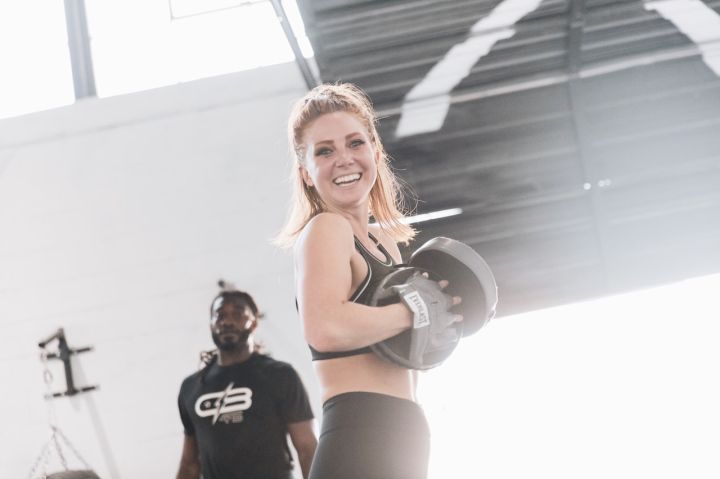Maintaining the standard body position and movement details to maintain a proper front neck squat can sometimes be found to be very difficult. A lot of it involves flexibility. A correct grip or bar rest angle, the front neck squat requires flexibility in the shoulders, elbows and wrists.

If you can't do this, a few simple stretches will get you there and help you maintain a better posture when squatting.
Brace

Place the barbell in front of your shoulders, this will take time to master. The correct position should be such that the barbell will rest on the front speed of your deltoids. Your hands should remain a little wider than your shoulders under the bar with your palms up. In order to maintain this position you must push your elbows upwards. Raising your elbow requires a significant bend in your wrist, which takes some practice.

Stretching the wrist

Although you can do a variety of stretches, the basic way to develop supported flexibility is still to maintain the correct hand position to achieve the best stretch. This way you can work on wrist and forearm flexibility, performing such exercises on a rack or using an empty bar without fear of the barbell falling off. Spending a few minutes in this position before and after your deep neck squat exercise will not only build your flexibility but will also allow you to get used to the grip of the bar.
Additional assistance with stretching

If the standard grip doesn't work, you can get help. Hold this position and try to relax your wrists. Then have someone gently push your elbows upwards. This can be uncomfortable, so make sure you find someone you trust (and a professional). You can also stretch one of your wrists at a time. Don't let your partner push your elbow up too high so that the bar gets pressed back and squeezes your windpipe.
One-arm stretch

Place the barbell on the deep squat rack at a height slightly lower than your shoulders, step forward and place one shoulder under the barbell and then place the hand of that arm under the barbell as if you were holding the barbell for a deep neck front squat. Then bring your elbows up as high as you can. Because you're only using one arm, the barbell won't be pushed away, which allows you to stretch your wrists and do a wider range of motion. Repeat this step for both arms.

These stretching exercises are necessary in order to perform the deep front neck squat in a standard and safe manner, but improving overall flexibility, whether in the arms, wrists, and shoulders, will be beneficial for all types of athletic performance.

